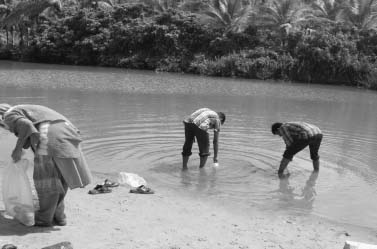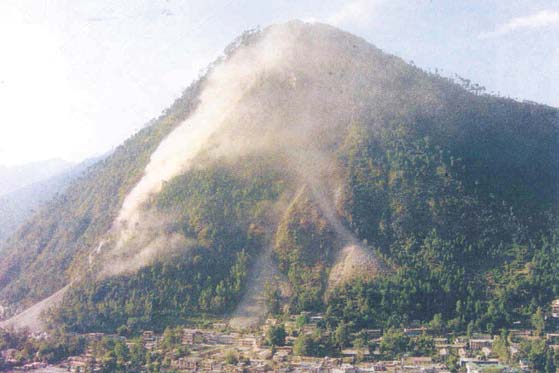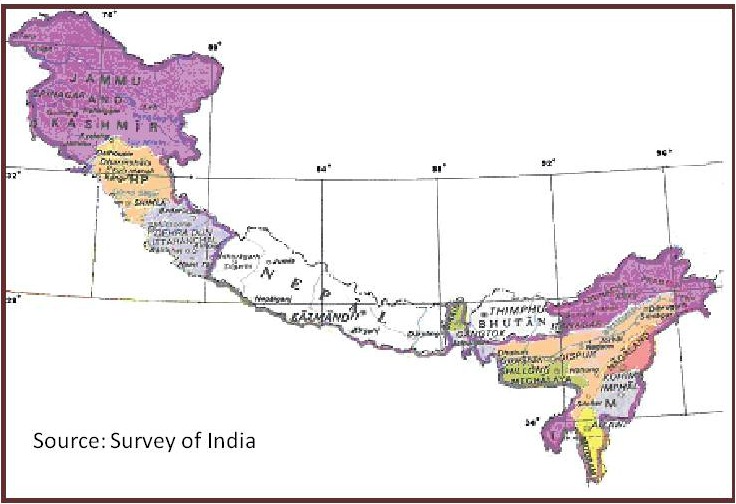Climate and Weather
Living rivers, dying rivers: Rivers in North East India
Posted on 15 Nov, 2011 03:29 PMRivers in North-East India

Rainwater Harvesting Users and Trainers' Manual by the KUIDFC
Posted on 10 Nov, 2011 12:03 PMAdequate potable water supply to the community has become an uphill task to the administration both in rural and urban areas. This is because of dwindling groundwater sources, over-extraction, pollution of surface water bodies, negligence of fresh water bodies, poor water management, etc.
Assam’s strategy and action plan on climate change - Recommendations - First draft - ASTEC (2011)
Posted on 07 Nov, 2011 11:20 AMThis report by the Assam Science Technology & Environment Council (ASTEC) contains the compiled recommendation of three consultative workshops organized in Assam University, Gauhati University and
Northeast monsoon arrives in Tamil Nadu, Kerala, Lakshadweep and coastal Andhra Pradesh, snowfall in Himachal and Kashmir - News Roundup (15 to 31 October 2011)
Posted on 06 Nov, 2011 04:59 PMThe monsoon has become active in the states of Tamil Nadu, Kerala, Lakshadweep and parts of coastal Andhra Pradesh. There are also reports of heavy rainfall in parts of Karnataka. At the same time, news from the north in the states of Himachal Pradesh and Kashmir includes reports of a cold wave and rains and the first snowfall of the season.
Northeast monsoon
Advancing development - Towards sustainable livelihoods - Madurai Symposium - DHAN Foundation - September 14-18 ( 2011)
Posted on 04 Nov, 2011 08:47 AMThe Madurai Symposium organised by the
Environmental monitoring programme on water quality in Kerala – A report by KSCSTE and CWRDM
Posted on 03 Nov, 2011 08:54 PM This report by the Kerala State Council for Science, Technology and Environment (KSCSTE) and Centre for Water Resources Development and Management (CWRDM) on water quality monitoring in Kerala covers all its forty four river basins. This is being done under the “Environmental Monitoring Programme on Water Quality” under which samples are being collected both from surface and groundwater sources.
This report by the Kerala State Council for Science, Technology and Environment (KSCSTE) and Centre for Water Resources Development and Management (CWRDM) on water quality monitoring in Kerala covers all its forty four river basins. This is being done under the “Environmental Monitoring Programme on Water Quality” under which samples are being collected both from surface and groundwater sources.
Groundwater sampling stations were fixed after conducting a sanitary survey in the panchayats. Water Quality Information System is being developed using Geographical Information Systems (GIS) to manage the water quality from point or non-point source of pollution.
In the first phase of the project, three river basins of Kerala viz. Kabbini, Periyar and Neyyar were monitored. The network was later expanded to basins such as Chaliyar, Kadalundi, Meenachil, Karamana, Anjarakandi, Pamba, Muvattupuzha, Bharatapuzha, and Chalakudy.
Impacts of climate change on public health in India - Paper published in Environmental Health Perspectives
Posted on 03 Nov, 2011 07:40 PMThis paper published in the journal Environmental Health Perspectives briefly summarises the relevant literature and highlights the challenges and opportunities for innovative research in the context of the impact of changing temperatures and precipitation patterns due to climate change on the health of populations from developing countries such as India.
Climate change impact assessment of water resources of India - A paper from Current Science
Posted on 02 Nov, 2011 10:52 AMThis paper published in the journal Current Science presents the findings of a study has been taken up to quantify the possible impacts of the climate change on the water resources of Indian river systems within the constraints of the uncertainty of climate change predictions. The study uses the PRECIS daily weather data to determine the spatio-temporal water availability in the river systems.
A distributed hydrological model, namely SWAT has been used to simulate all the river basins of the country. The analysis has been performed to evaluate the severity of droughts and floods and thus identify the vulnerable hotspots that may require attention in view of the climate change in various parts of the country.
Impacts of climate change and climate variability on the water resources are likely to affect irrigated agriculture, installed power capacity, environmental flows in the dry season and higher flows during the wet season, thereby causing severe droughts and floods in urban and rural areas. Climate change impacts on water resources which are addressed and analysed in the present study include impacts on annual and inter-annual water availability as well as extreme events of droughts and floods.
Management of landslides and snow avalanches - National disaster management guidelines by National Disaster Management Authority
Posted on 02 Nov, 2011 08:15 AM These guidelines by the National Disaster Management Authority (NDMA) on management of landslides and snow avalanches aim to reduce the enormous destructive potential of landslides and minimize the consequential losses by institutionalizing the landslide hazard mitigation efforts.
These guidelines by the National Disaster Management Authority (NDMA) on management of landslides and snow avalanches aim to reduce the enormous destructive potential of landslides and minimize the consequential losses by institutionalizing the landslide hazard mitigation efforts.
It is necessary that the hazard must first be recognized, the risk analyzed and an appropriate strategy developed at the national level to mitigate its impact. To achieve this objective, the NDMA initiated a series of consultations for drafting the national guidelines on landslides and snow avalanches to guide the activities envisaged for mitigating the risk emanating from landslides at all levels. The guidelines include regulatory and non-regulatory frameworks with defined time schedules for all activities. It is envisioned that all national and state disaster management plans and policies for landslides will be formulated and implemented keeping in view the overall framework of the guidelines.
Problems of hill states and hill areas and ways to ensure that they do not suffer in any way because of their peculiarities - Report of the Task Force - Planning Commission
Posted on 01 Nov, 2011 09:37 PMThis report by the Task Force, constituted by the Planning Commission, Government of India in April, 2008, is an outcome of the need expressed by the Prime Minister of India for a fresh analysis of the problems of the hill states and hill areas of the country in a manner that suggests that these areas do not suffer in any way on account of their peculiarities.
Opinions have been expressed that the pace of development of the Indian Himalayan Region (IHR) has been slow when compared to the rest of the country. At the same time, its fragile nature and difficulty of taking up conventional development initiatives has not been appreciated. In this report, arguments have been presented recommending reshaping of policies to bring in the “mountain perspective” for the IHR, in the national planning. Emphasis has also been laid on developing norms for good governance and for harnessing social capital at the grassroots.






